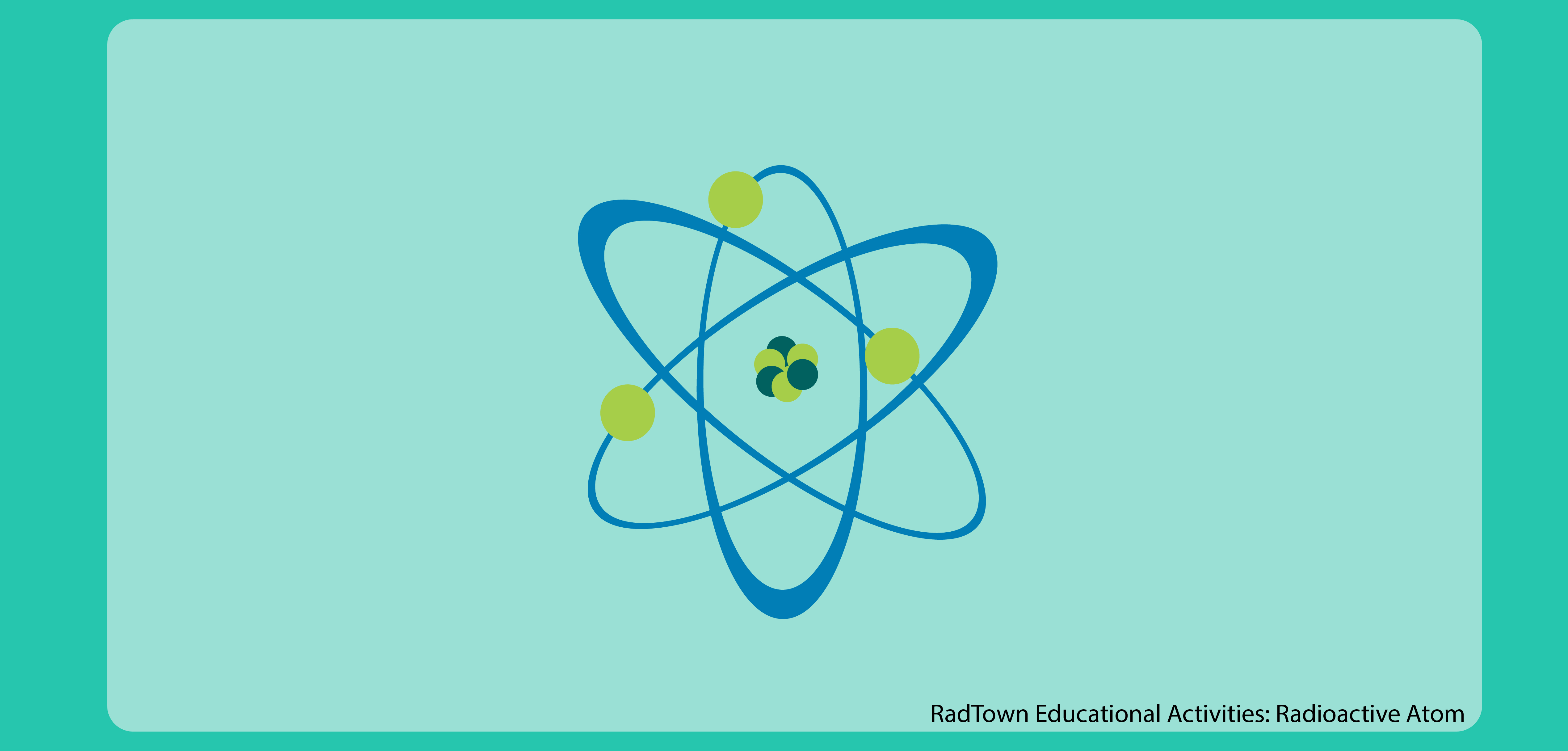RadTown Radioactive Atom Activity 2: Atomic Math and Shorthand
Every element has a chemical symbol, an atomic mass, and an atomic number. This activity is intended for middle and high school students.
- Objectives
- Next Generation Science Standards
- Materials and Resources
- Time
- Directions
- Common Core State Standards
- Printable Worksheets and Classroom Aids
Objectives
Students will use information from the periodic table to calculate the number of protons, neutrons and electrons in a neutral atom.
NOTE: Students should be familiar atomic structure and particles. The atomic shorthand information may serve as an introduction to Activity 6: Radioactive Decay Chain.
Next Generation Science Standards
The concepts in this activity can be used to support the following science standard:
- PS1. Structure and Properties of Matter
Materials and Resources
Each italicized document title can be found at the bottom of this page, and is available for printing and distribution.
- The Radioactive Atom: Teacher Background Information
- Vocabulary Materials
- Several objects that represent or are made of different elements (e.g., gold ring, copper twine or pipe or lead from a pencil)
- Periodic Table of Elements (one per student, pair or group).
- Atomic Calculations Worksheet (one per student, pair or group) and Atomic Calculations: Teacher Answer Key
Time
45-60 minutes, not including optional activities or extensions.
Vocabulary
- Atom
- Electron
- Isotope
- Neutron
- Nucleus
- Proton
Directions
- Start with a vocabulary activity if students are not familiar with radiation and the terms used in this activity, or provide students with the terms and definitions.
- Explain that all matter is made up of elements, some of which we can see (e.g., metals) and others we cannot (e.g., colorless gases). The smallest form of elements and all matter is atoms. Display two or more objects representing different elements (e.g., gold ring, copper twine or pipe or lead from a pencil) for students to identify.
- Ask students how the atoms of these elements are similar and how they differ. All atoms are made up of the same particles: protons, neutrons and electrons. The atoms of each element have a unique number of protons, neutrons and electrons.
- Provide students with the Periodic Table of Elements.
- Ask students what data on the periodic table can be used to determine the atomic structure of an atom. The atomic number indicates the number of protons and the number of electrons in an atom. Each element has a unique atomic number. The atomic mass is used to calculate the number of neutrons by subtracting the atomic mass from the atomic number.
- Select an element or use the objects you showed at the beginning of the activity. Work through an example of how to use the periodic table to determine the atomic structure of the element. Reference the Determining the Structure of a Neutral Atom section of The Radioactive Atom: Teacher Background Information.
- Provide students with a copy of the Atomic Calculations Worksheet. Direct them to complete the worksheet using the periodic table as a reference.
- Optional activity or extension: NOTE: This information may serve as a prerequisite for Activity 6: Radioactive Decay Chain.
- Explain that as scientists identified the nuclear properties of elements and found different forms of elements (called isotopes), they needed an easy way to write and keep track of the basic nuclear properties. Scientists developed atomic shorthand that combines the defining pieces of information about the various forms of an element. There is more than one way the shorthand may be written as shown in the examples.
- Display the following:
- Ask students to describe the notations in the examples.
- Display the following (or similar) examples of elemental shorthand or notations and ask students to decipher them. The notations are for two forms (or isotopes) of iron with different atomic masses: iron-54 and iron-56.
- Conclude by having students share one or two things they learned about atomic structure and the periodic table.
The concepts in the Atomic Math and Shorthand activity align with the following:
CCSS Language Arts Standards for Literacy in History/Social Studies, Science, & Technical Subjects:
- CSSS.ELA-Literacy.SL.6-12.1 Comprehension and Collaboration
- CSSS.ELA-Literacy.RST.6-12.4 Craft and Structure
- CSSS.ELA-Literacy.RST.6-12.7 Integration of Knowledge and Ideas
- CSSS.ELA-Literacy.WHST.6-12.9 Research to Build and Present Knowledge
CCSS Mathematics Standards:
- CCSS.MATH.PRACTICE.MP1
- CCSS.MATH.PRACTICE.MP2

